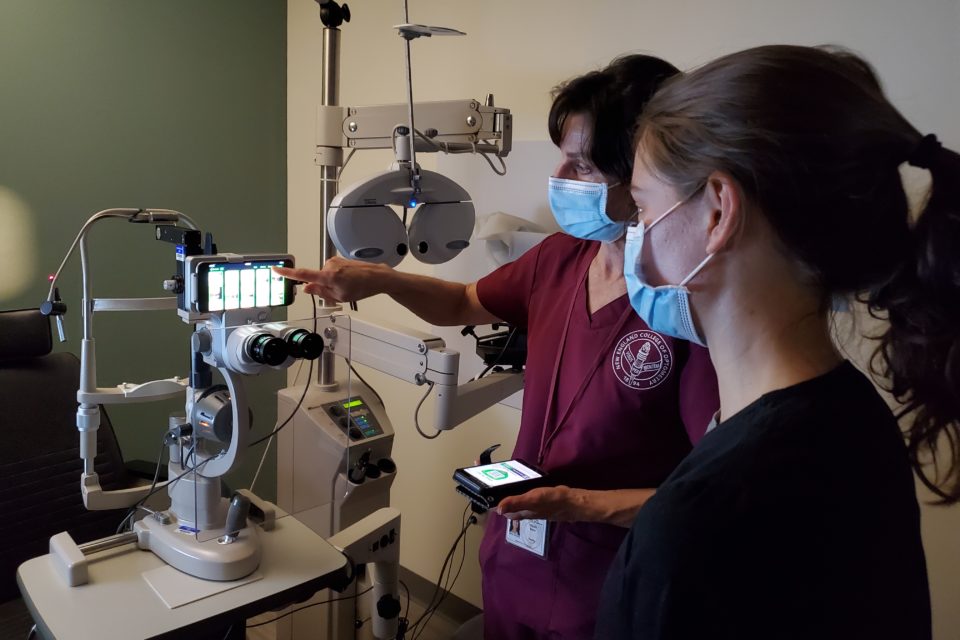Why are my eyes so irritated? It could be Dry Eye

Do your eyes often feel gritty, itchy, or dry? Do they burn or tear excessively? You may have a condition called dry eye. Optometrists can diagnose dry eye and offer options to manage your symptoms and the underlying causes.
“Dry eye is a chronic, progressive ocular surface disease,” explains Kristen Brown, OD, who has a specialty focus in this area. At the NECO Eye Care Center, optometrists are seeing an increase in patients with the condition. And while the average patient is middle-aged or older, there is a growing number of people with dry eye in their 20s, or even teens.
“The increased prevalence of dry eye may be due to environmental and behavioral factors such as increased screen time,” Dr. Brown believes.
Dry eye is often underdiagnosed and undertreated, according to Dr. Brown. She points out that most patients with early signs of dry eye do not have symptoms, or the symptoms are intermittent and people do not realize they are due to dry eye. Because dry eye is chronic and progressive, inflammation also becomes chronic and can progressively damage the eye’s surface if left untreated.
“The goal is early detection to slow progression, preserve the Meibomian glands [lid glands that produce oil to keep eyes moist], and improve eye health and quality of life for patients with significant symptoms,” Dr. Brown says. This is done through a combination of diagnostic testing and customized treatment options.
Treatment focuses on reducing inflammation, improving the quality of natural tears, and alleviating symptoms. NECO offers high-tech treatment options such as intense pulsed light (IPL), which shrinks capillaries carrying inflammatory proteins, and thermal expression, which enables better oil flow from the meibomian glands.
Low-tech options like warm compresses, lid scrubs, and artificial tears or prescription eye drops are also effective therapies in many cases. Initial treatments are often done during clinic visits, with maintenance at home.
“It’s important,” Dr. Brown says, “to help patients understand the underlying causes and contributors to dry eye, as well as to tailor a treatment approach, so each patient can successfully manage their dry eye condition and symptoms.”